Search results
56 results found.
56 results found.
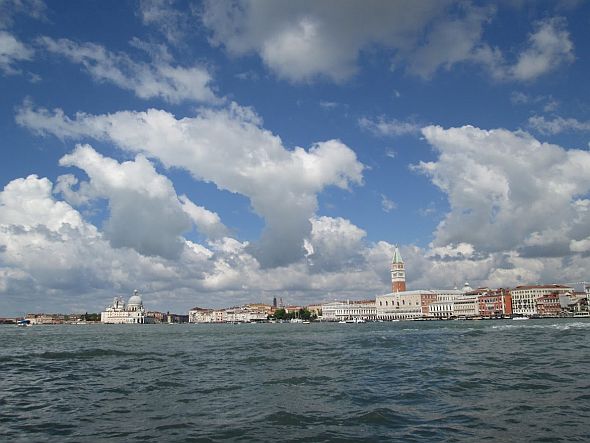
You want to help Venice with her budget problems? Buy a palace. Or 13, if you’re in a good mood — that’s how many the city has recently mentioned considering putting on sale.
But this story isn’t about palaces, it’s about money, need for, lack of.
The thing is this: It’s easy to imagine that All Those Tourists who come through Venice are strewing cash like crazed monarchs. “What’s the problem? Venice lives on tourism!” Actually, it doesn’t. Venice lives mostly on an allowance from the national government which has been cut so far back that there aren’t enough coins left in the municipal pocket to make even one tiny jingle. Venice can’t be self-supporting because there are too few tax-paying residents (more about that in another post) to pay for the needs of a really big, super-old World Heritage Site trampled by millions of people a year.

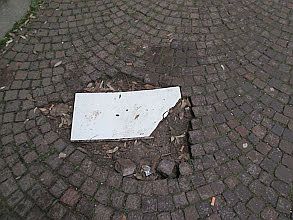
I feel like I’ve been reading about Venice’s financial problems all my life, but the stories come out in bits and pieces and aren’t very well connected, and the numbers are always up in millions and billions, so I’ve never had a clear notion of what was involved in paying for keeping Venice running. Now I have some information even I can understand, so here goes. To save space converting numbers, just bear in mind that one euro = 1.12 dollars at the moment.
One reason it’s hard to understand how Venice can be so broke are the thrilling reports of money made from big events such as New Year’s Eve, the Biennale, and Carnival. The numbers are dazzling to a one-celled organism like me. A few months ago a story in the Gazzettino trumpeted the fact (I guess it’s a fact) that 40 million euros were expected to come pouring through the big chute labeled “Carnival.” Forty million euros!! My first reaction is “Semo in poenta!” which is Venetian for “We’re in polenta!” which is Venetian for “We’ve struck paydirt!” (Or “We can make next month’s rent!” or “We can buy the kid a new pair of shoes!” or “We can feed your mom this week!”).
But pausing for a moment to consider how this money is distributed — hint: it doesn’t drop directly into the city’s coffers — the reality is that (A) that much money is expected to be spent here (yes!!) by tourists paying for things like (B) hotel rooms (C) food (D) gondola rides (E) taxi rides (F) fabulous ticket-only costume parties and masked balls in palaces, tickets to which can reach 2,500 euros, and (E) extras. “Extras” is usually where my own budget strikes the reef.
The benefit to the city from all this spendage is supposed to arrive via taxes. You know, the taxes nobody pays. Sorry — almost nobody. More about taxes in another post.
So forget big events and their resplendent ephemeral income. Let’s look for a moment at the city’s everyday budget.
Income: The Special Law for Venice. Before I continue, it’s worth knowing that billions of euros granted to Venice over the past decade or so for the benefit of the city and lagoon have been pretty much all diverted to the MOSE project. This diversion was accomplished by the MOSE people, with a big assist from the city fathers and anybody else who could get close enough to stick out their hand. I draw your attention to the phrase in the Law which mentions that the money is also granted to Venice “to ensure its socio-economic viability.”

The Gazzettino reported the most recent allotment of funds via the Special Law: Venice will get only half of the money that was hoped for. (“We have no money” is not exclusively a Venetian song.) The city will receive a total of 65 million euros over seven years to be doled out thusly: 5 million in 2016 and 10 million per year from 2017 to 2022. Looked at that way, it doesn’t sound like much at all, and of course the city fathers agreed; some politicians had pressed for 50 million per year for three years, while another political group had suggested 13 million per year for an unspecified number of years. (They were probably estimating “forever.”)
To put those numbers into some kind of context, until a few years ago (by which the Gazzettino probably means 2008), the city spent 150 million euros a year. Now it’s a struggle to the death to find the money for paying the policemen.
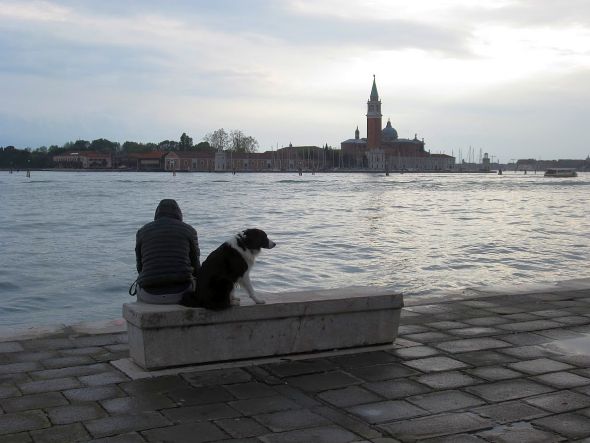
Good news: The city has pulled itself up nearer to the edge of the deep hole into which it had fallen, thanks to the drastic cuts made in the budget by Commissario Vittorio Zappalorto (2014-2015). When I say “drastic,” I mean along the lines of “We had to destroy the budget in order to save it.” So at the end of 2015, after slashing and burning by him as well as the new mayor, Luigi Brugnaro, the deficit has been halved. The 64 million debt is now 30 million euros. This is huge news, though of course 30 million isn’t a particularly small number.
The Special Law allotment includes money for art works. The Ministry of Culture is allowing 6 million euros to Venice (out of 13 million to the Veneto) for 241 projects defined as being at the national level, among which is legal tender for the following projects:
This is all very gratifying, and I’m not being sarcastic.
But now we come to the prickly subject of Outgo. Moving our eyes from art treasures to the World Outside, things look less lovely.
The Special Law has provided 28 million euros, which is earmarked thusly: 5 million for maintenance of parks and green spaces; and 10 million for “cultural interventions” (theatre, cinema, programs at the Bevilacqua La Masa foundation and the Querini Stampalia. I thought those were private?); and 13 million for ‘touristic interventions,” which despite the label are subdivided to pay the municipal police (7,500,000) on holidays and nights; 1,100,000 for the Venetian-rowing world; 1,600,000 for the “organization of events,” especially the promotion thereof. This is the division of the spoils till 2018. We’ll definitely be turning our shirt collars and drinking tap water to get through three years on that allowance.
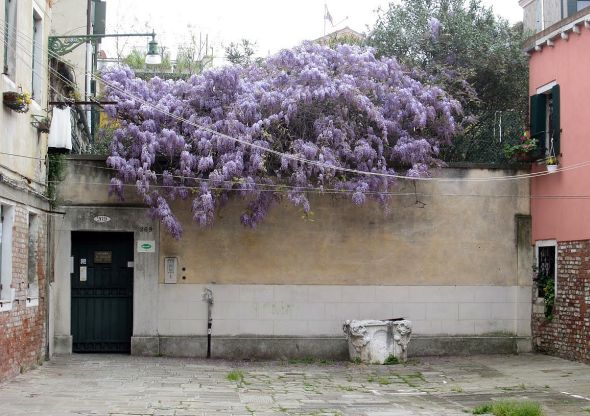
A very interesting and detailed article in a magazine called “Il Metropolitano” outlined what it costs to keep Venice running (translated by me). The subtitle gives a hint of things to come: “To guarantee the services in the Historic Center costs 41 million more per year than any city in the rest of Italy. And Rome is sending less and less money.” It’s true that Venice is the most expensive city in Italy, but now I see that it’s expensive not only for tourists and residents, but for itself.
An independent research organization, the Centro Studi Sintesi, recently did a detailed rundown of the city budget. You don’t need to be some financial wizard to grasp that the 5 million euros allotted for 2016 falls slightly short of the estimated 120 million annually that Venice needs. There’s more — due to drastic national cuts imposed in order to get the Italian economy in line with European norms, Venice did not receive the 1,250,000,000 (you read that right) it was expecting over the past few years, and only got 77 per cent of what was expected between 2010 and 2015, which makes Venice the city most-penalized by national economic restrictions in the country.
Let’s go to the videotape:
Garbage collection and street cleaning: 30,000,000 per year. It’s commonly thought – I used to think it too — that the amazing quantity of tourist trash increases the spazzino‘s workload, but statistically this turns out not to be true. The study says that the cost is high because Venice is the only city in the world in which, six days a week, the trash is collected entirely by hand. The small streets and winding canals are implacable on that score. The average annual cost of garbage collection in Mestre, on the mainland, is 156 per family or entity such as a shop or restaurant. In Venice, it’s 727 euros per family or entity.
Cemetery: 2,000,000 per year. Stories keep appearing in the paper about how the cemetery on the island of San Michele is falling to pieces. And it is. But there are also 16 other cemeteries in the Comune of Venice and, the study specifies, eight in the Historic Center. There’s San Michele, but there are also two cemeteries on the Lido one each on Burano (actually Mazzorbo), Malamocco, Pellestrina, San Pietro in Volta, and Sant’ Erasmo. There are eight more in the Comune of Venice on the mainland.
Sewage treatment: 600,000 euros. No, it doesn’t all go into the canals anymore. For the past 20 years there has been a steady improvement in this necessary part of city management. Septic tanks have been required to be installed in public buildings — hotels, restaurants, offices, museums, etc. But again, the tiny, complicated spaces of which Venice is so fascinatingly constructed means that there isn’t one in the Historic Center. You may have noticed that “honey boats” come and pump out the septic tanks, but the city doesn’t pay for that. The sewage is taken to one of the 30-some treatment centers strewn around the Comune, which includes some of the mainland. There is one center on the Lido and one in Pellestrina, to which the houses there are connected.
Public parks (“green spaces”): 600,000 euros. Although not considered technically an essential public service, there is a surprising number of big trees around, in biggish and smallish parks alike. And also shrubs and flowers, which are so desperately wonderful in the summer heat. But trees and bushes need to be trimmed, pruned, and lopped. Unhappily, this category of expense does not include trimming the bridges, which continue to sprout destructive plants and weeds because, in the organizational scheme, shrubbery on bridges is nobody’s responsibility. It’s not garbage, it’s not a green space, it’s not anything but just stuff.
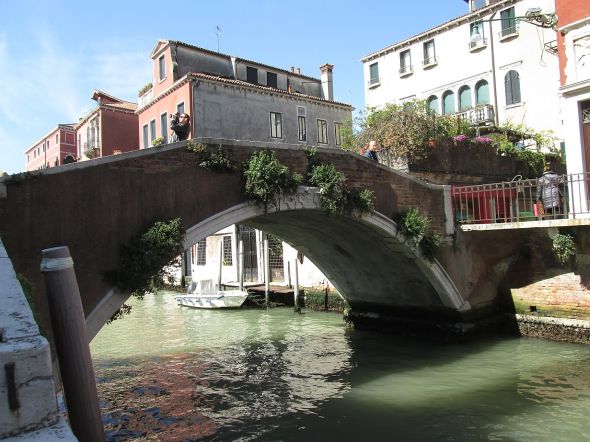
Tide Forecast: 1,200,000 euros. Acqua alta is far from free. First, there is the cost of putting out and removing the high-water walkways. That is to say, hauling them all from the warehouse in September and stacking them at the crucial points; unstacking and positioning them when high tide is coming ashore, stacking them up again (to save space on the street) when the tide goes out, and on and on until April, when they are definitively hauled away to the warehouse. But this is paid for by the garbage-collection budget, because it’s the spazzini who do this work. Thereby leaving uncollected bags of garbage all over the city on high-water days.
But the real cost is the maintenance of the system of collecting data and forecasting the tide, which requires many instruments (maintenance of) and manpower to analyze and broadcast the data. Somebody has to hit the button to sound the warning sirens, after all. I can tell you that this department needs lots more money than it gets. And then, of course, the citizens screech when the prediction is not fulfilled. You can understand people yelling when the tide turns out to be higher than forecast, but people yell when it turns out to be lower, too. If I had to work at the Tide Center, I’d be on drugs.
Street Lighting: 1,000,000 euros. When I came here in 1994, there was still a good number of streets which were dark and romantic. Or dark and ominous, as you prefer. On our fondamenta (in another neighborhood), the only light at sundown was from the window of the deli across the canal. I used to call it “the lighthouse of the neighborhood” – it was the only gleam in the gloom of a dismal, foggy night. Then the city started to install more streetlamps and now there are some areas that are as bright as stadiums. Here again, Venice’s fascinating interweaving of tiny streets creates unromantic problems. On the mainland, 292 lamps per square kilometer are sufficient. In Venice, you need 804. And all that juice isn’t cheap.
School lunches: 300,000 euros. No need to repeat it – Getting cargo around Venice is costly (lots of canals, bridges, streets, and most important of all, very little storage space, therefore more trips). A child eating in the cafeteria in a school in Venice pays from 76 – 84 cents more per meal than a child on the mainland.
Handicapped transport: 1,200,000 euros. The explanation of this expense isn’t clear. I can understand that making many places wheelchair-accessible is expensive, but once that’s been accomplished, the cost should diminish. There are buses on the Lido and mainland which have extending ramps to help people in wheelchairs board, but to get on a vaporetto, the person still needs to be hoisted by hand. Still, this is in the budget, so there we’ll leave it.
Ordinary maintenance: 4,100,000 euros. To the naked eye, it appears that this generally consists of putting warning tape around spots that are dangerous (broken pavement, collapsing fondamente, and so on). Canal-dredging has become a mere dream. But let’s say that some problem crops up with the wiring in City Hall – fixing it will cost 20 per cent more than on the mainland. Costs for construction are 30 per cent higher than on the mainland. The biggest challenge (expense) has to do with the street pavement. On the mainland, just throw down another layer of asphalt. Here, the streets have to be torn up and reconstructed stone by stone. Result: It costs 80 per cent more in Venice than on the mainland to fix a street.
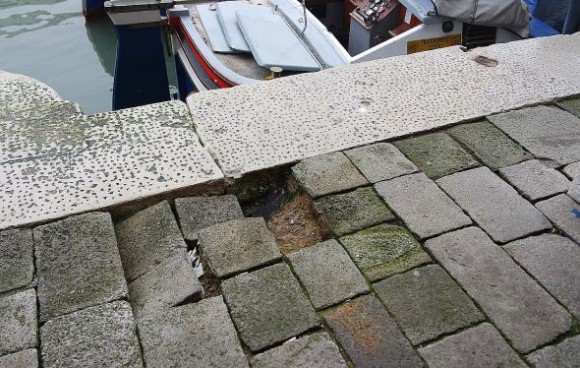
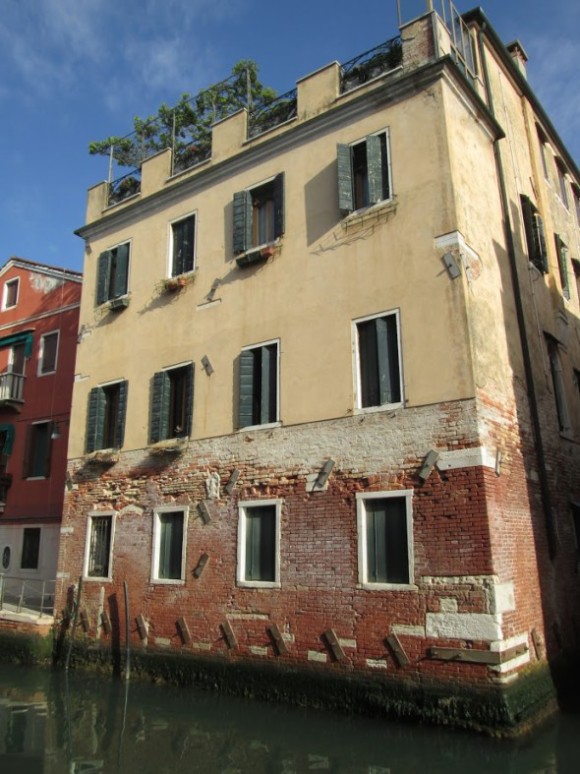
I will tell you a revealing remark made to me many years ago by a Venetian who was showing me some of the destruction wrought by motondoso on fondamente and assorted streets and bridges. He pointed out a few massive stones bordering the fondamenta at the church of the Salute. Their relationship with the horizontal had been compromised by some trivial wound, and waves and gravity were obviously going to make it worse. I, with my quaint, Anglo-Saxon “stitch in time,” “for want of a nail” outlook on life, asked him why the city didn’t intervene to repair this now, thereby avoiding more work later. He said, “Because it doesn’t cost enough.” Translation: Only when a problem becomes big, and therefore costly, and therefore worthwhile to some company to make loads of money fixing it, is the situation addressed. This makes the same amount of sense as not clipping a hangnail because when it becomes gangrenous you can bring in teams of expensive surgeons and teratons of drugs and everybody makes some money.
There is even a saying to cover this approach: “Don’t bandage your hand until it’s hurt.” To which I always reply, “If you avoid hurting your hand, you won’t have to bandage it.” You can say it in Italian, but I haven’t found anybody who thinks it makes sense.
Let’s finish in a blaze of glory, or at least a blaze from some shorted-out circuit on the tram line. My idea is this: If you can’t pay to fix the problems you already have, at least don’t create new problems that will cost even more money. The tram holds a weird fascination for me, as it continues to reveal spectacular flaws in design and construction. There are almost daily breakdowns, delays, malfunctions of all sizes and shapes down to the fact that there isn’t an adequate system for de-fogging the windshields. It cost 208 million euros to build two lines and buy the trains, but it costs twice as much as a normal bus to operate. The electric bill is 2,500 euros ($2,820) a day. Two carriages of the 20-train fleet are permanently out of service, left in the shop to be cannibalized for parts as needed, because the company which made the parts has gone out of business.
I think that’s enough for one day.

Talking about tourism in Venice is like talking about altitude sickness on Kilimanjaro. I speak from experience, as you know.
Both phenomena can be extreme, disagreeable, and unavoidable. (Well, altitude sickness is avoidable, theoretically, if you have enough time to acclimate yourself.) I haven’t discovered a way to acclimate to tourism here, at the point it has reached, except by avoidance. Which is like solving altitude sickness by not climbing the mountain. No taking the vaporetto on the Grand Canal on Sunday afternoon, for example. No Piazza San Marco pretty much ever until winter.
But yesterday morning at the Rialto Market vaporetto stop I had a useful exchange of views with a heftily-middle-aged German lady. (Useful to me; she was untouched by the experience.)
So we’re standing on the dock, as I said. I snap a photo of some people I know from the rowing section of the Railway Employees’ Afterwork Club, as they rowed their gondola downstream. They were followed by a caorlina from another club. I didn’t raise my camera.
She speaks: “Don’t you want to take a picture of them?”
I reply: “No, I was just taking a picture of the other people because I know them.”
“Are they training for something?”
“No, they’re just out for a spin in the morning. It’s something people in the boat clubs like to do.”
“Well, I’ve never seen them and I’ve been to Venice many times.”
“Oh. That’s odd.”
A pause.
“So you live here?”
“Yes I do.”
“HOW do you STAND IT with all the TOURISTS?”
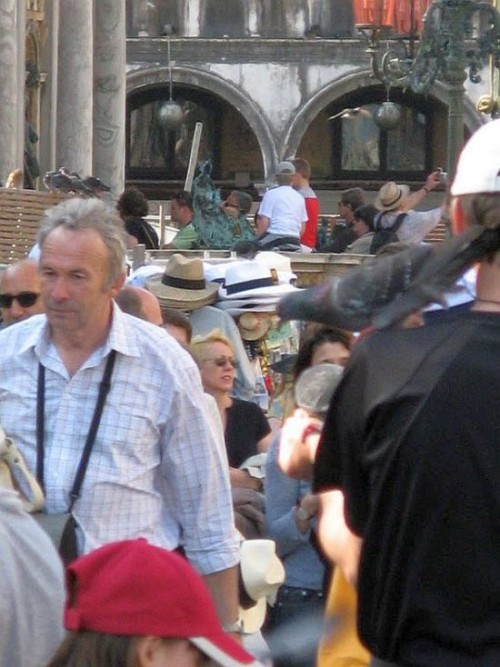
I could tell — as perhaps you can too — that she wasn’t asking because she wanted to know. She wasn’t asking, actually. She was announcing her opinion on what it would be like to live here, and clearly it would be worse than five forevers in Hades. But I decided to go with it for a while, just to see where we might end up.
“Well, every place has its positive and negative aspects,” I said. (Aren’t you proud of me for being so tactful?) “If there is a perfect place on earth, please tell me where it is, and I’ll go there immediately.”
But she was not to be pried loose from the subject of all the TOURISTS. Though now that I think of it, I should have asked her which corner of paradise she comes from.
“I’ve always come to Venice in the WINTER when there is NOBODY. I went to (I can’t remember where) in the winter and there was NOBODY. It was WONDERFUL. I don’t LIKE people.” Something in her voice made me picture a scene of utter desolation in which she, rejoicing, wandered solitarily through deserted streets as the evening shadows thickened over the stiffening corpse of a large rat in the main square.

“So why did you come in April?” (The obvious question.)
“Oh, I’m on a CRUISE.” As if this made her presence on the dock at the market inevitable. Do they drive people off the ship with whips? And I suppose she had examined the itinerary, hence was not taken by surprise to find herself in VENICE. But I didn’t reach for any of these flapping loose ends.
Our vaporetto was pulling up to the dock. “I hope you enjoy your cruise,” I said. She didn’t reply but I had the impression she was already doubting that that would be likely.
As I thought back over this very unsatisfactory conversation, I realized that I had missed my chance to throw her to the mat and painfully pin her, even if she did weigh twice as much as me.
It would have been easy. All I needed to do was to say, ” If tourists annoy you, what are you doing here? Because you’re just as much a tourist as the rest of them. Maybe you’re annoying everybody else. So why don’t you get the ball rolling by going away?”
I know that Lino would have put it more succinctly; he’d have said “So go home already.” But that lacks the philosophical twist that interested me.
Who gets to decide who should be allowed to be a tourist in Venice? They’re irritating because they’re here? You’re here too.
As Stanislaw Lec observed, “No snowflake in an avalanche feels responsible.”
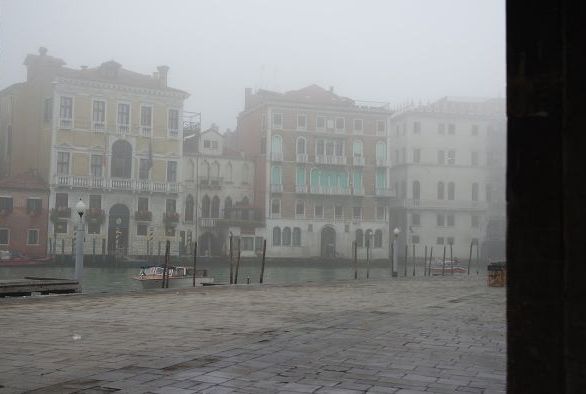
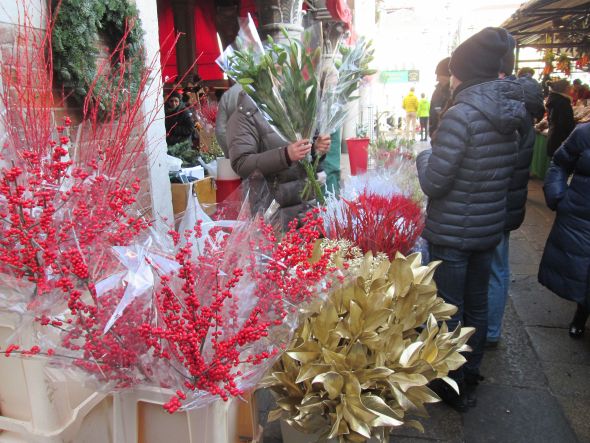
Yesterday was December 13, as you know, and it was also the feast day of Santa Lucia, as you know now.
Not-so-trivia alert: The inescapable but ever-beautiful Neapolitan song, “Santa Lucia,” which is known everywhere as far as the Tadpole Galaxy, does not refer to the lovely Sicilian martyr. It refers to Borgo Santa Lucia, a waterfront neighborhood of Naples which is named for the lovely Sicilian martyr. Words such as “ship,” “sea,” and “Naples” spangling the song kind of give it away, at least if you understand Italian or Neapolitan.
Words may come and go, but someone hit on a melody which is impossible to forget. It even works in Thai. The Italian founder of Silpakorn University in Bangkok, Prof. Corrado Feroci, loved it so much that he used the tune as the setting for the official song of the university.
What does all this have to do with Venice? St. Lucy’s mortal remains lie in state above the high altar of the church of S. Geremia, having been moved from her very own church in 1861 when it was demolished to make room for the railway station. (Which is why the Venice station is subtitled “Santa Lucia.”)
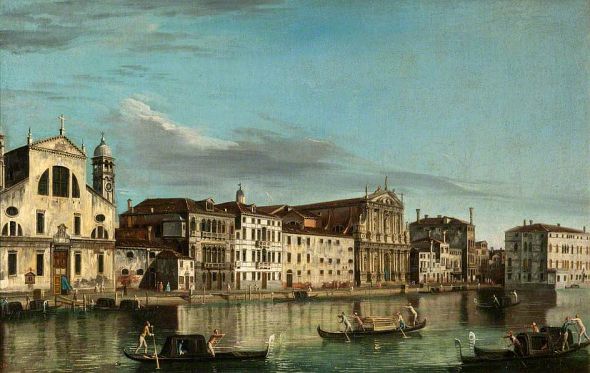
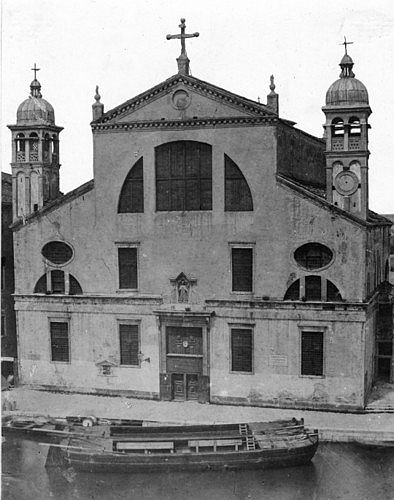
Saint Lucy is the saint responsible for addressing eye problems. The only time I ever went to services at San Geremia on her feast day I was struck by the huge floral arrangement offered by the Ophthalmologists’ Association of the Veneto, which was extremely gracious, though odd. Wouldn’t she be the one to put them out of business?
In the old days in Venice, people used to link St. Lucy’s day to freezing cold: “Da Santa Lussia, el fredo crussia” (St. Lucy’s Day, the cold is excruciating). Global warming has sent that saying off to follow the dodo. Anyone who utters this phrase nowadays — me, for instance — is indulging in nostalgia.
But St. Lucy maintains her place in another common exchange. Let’s say you run across someone you know, whom you compliment. Example: “Hey, you’re looking good.” Rejoinder: “Thank St. Lucy who’s given you good eyes.” Depending on the tone of voice, the remark allows for plenty of deprecation, implying anything from “Thank St. Lucy, but you should go get your eyes checked” to “Thank St. Lucy, but are you going blind?” Evidently she can control your eyesight at will.

She was a native of Siracusa, and her body was brought here in 1280. The specific reason was probably the general reason for such events (Venice possessed some A-list relics, such as the remains of St. Stephen, the first Christian martyr, and Saint Zachary, father of John the Baptist), to wit, money! Sorry, I meant offerings and gifts from religious pilgrims. Religious tourism was a very big deal in the old days, and everybody wanted to make the most of their saints. Naturally, the people of Siracusa want to have her back. She’s like the Elgin Marbles. But Venice has determined to keep her, though the patriarch did allow her to return home for a while a few years ago. I can’t remember why. Maybe it was her birthday.
Yesterday Lino gave me a startling new bit of Lucy lore. He was geezing about how it used to be one of the biggest feast days celebrated in Venice and now nobody pays the slightest bit of attention to her (except for annual flowers and recurrent badinage). And then he said “And everybody used to eat storti with whipped cream.”
Whipped cream I know, but storti? Literally, it means “crooked,” and I’ve heard an elderly person refer to somebody crafty or cunning as a “storto dal Dolo.” This is a jest, because while “storto” is clearly not high praise (calling someone “crooked” isn’t pretty in English, either), saying that the sneaky person came from Dolo actually refers to a well-known sort of waffle cone made in Dolo, a town on the Brenta river which used to be famous for producing this crunchy little item. Every March Dolo puts on the “Carnival of the Storti.”
Cones and cream, in whatever form, are evidently destined for each other, the Ilsa and Rick of fattening snacks. I didn’t know St. Lucy encouraged people to eat them, but I say any saint’s feast day ought to call for whipped cream.
So I immediately started nagging Lino to take me to somewhere I could eat storti with whipped cream, and although he said you used to be able to get them anywhere in Venice, he remembered a place not far from the church of San Geremia. We went in and asked if they had storti with whipped cream. “Of course,” said the woman behind the bar, in a way that implied that we might have asked if they had electricity.
For any traveler who wants to chance his arm, or palate, I will reveal that this confection was consumed at the Bar Gelateria Da Nini in the Strada Nova a few steps from the Ponte delle Guglie at number 1306. I am not responsible for your arteries, I’m just fulfilling my journalistic responsibilities.
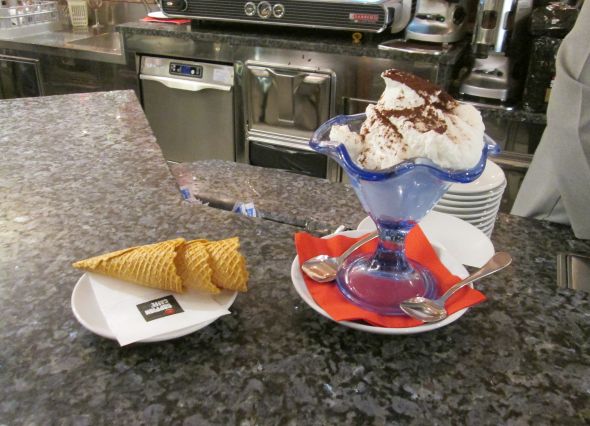
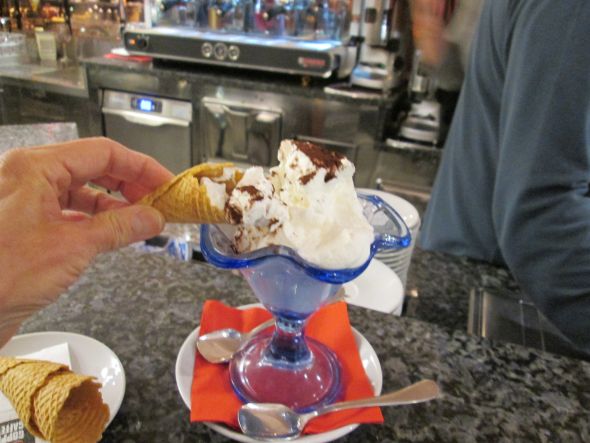
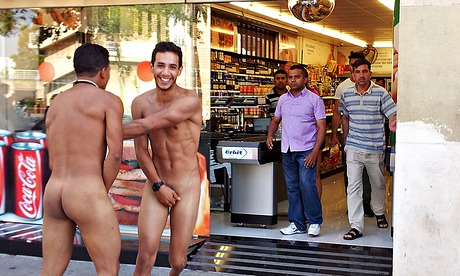
I know that I promised not to talk about degradation and tourism anymore. Yet here I am.
Or rather, here they are.
In case I didn’t mention, or even hint at it, I realize that Venice is not the only place on earth which experiences rogue tourists. I hope I didn’t give the impression that I thought Venice was unique in suffering this scourge. I merely wanted to say, “It’s happening here, it needs to stop.”
However, reverence for truth compels me to widen the picture, in part because the wild things in this case do not make my heart sing, and they’re Italians.
What they got up to in Barcelona trumps anything I can offer in the way of gobsmacking madness. I don’t defend them in any way, I just want to say two small things:
First, bodies like theirs cry out to be exhibited (though not fully frontally). I know that’s a stupid thing to say, I just wanted to acknowledge all those hours they put in at the gym, and whatever supplements they take.
Second, how could anybody manage to run around a city naked for THREE HOURS? I can understand totally why the photographer followed them around the entire time (though someone could reasonably ask why he didn’t stop them, while he’s so busy complaining about tourists) — they’re just as cute as little buttons.
But what finally brought them to a stop? Did they run out of gas? Hit a cold front? Suddenly realize they had nowhere to put their money and passports? Or did the photographer finally tell them he had enough pictures, so they could get dressed?
http://www.theguardian.com/world/2014/aug/21/naked-italians-protests-drunken-tourists-barcelona